Overview
Flint, MI has been without clean water since April 2014. Five years ago, city officials decided to switch the main water source to the Flint River, long a dumping ground for hazardous waste; of all the waste, the most prominent contaminant has been lead. Since the switch and despite immediate outrage from the city’s residents, the lack of effort by the government at the federal level has been profoundly disappointing. To this day, officials continue to advise the residents of Flint to buy and drink from water bottles. Not only is this unsustainable, but it is also unfair, as they are suffering the consequences of someone else’s decisions. The reason as to why urgent action has not been taken can likely be attributed to the city’s demographics: Flint mainly consists of Black families, and 40% of the city lives in poverty. The United States of America has a long—and continuing—history of not doing enough for its citizens of color, and this is yet another case.
charity: water
Brainstorming sustainable solutions to this crisis requires organizations knowledgable in providing communities access to clean water. One that I have been a longtime fan of is charity: water, whose mission statement involves bringing “clean and safe drinking water to people in need around the world.” The total number of people in the world living without clean water is currently 663 million, and roughly 97,000 of those millions live in Flint, MI. A lack of clean water is not a distant problem, and Americans need to stop viewing it as such; it is taking place here in our country, in our home, on our turf. This initiative provides charity: water with the opportunity to provide domestic assistance, as they are based in New York City, New York.
Mission Statement
With Aid to Flint, I strive to make clean water accessible through sustainable solutions and foster a supportive community and relationship between Flint residents and people from other cities in the U.S.
Reframing the Questions
1. How can we provide sustainable solutions to Flint residents through a mobile application?
2. How might we demonstrate transparency regarding donations?
3. How might the Flint residents build community with others as well as within their own city?
Campaign Newsletter
charity: water regularly sends out email campaigns, and they are often enjoyable to read because of their visual design. The next newsletter that the nonprofit sends out regarding Flint, MI would be designed similarly to their previous emails. This sense of consistency will feel familiar to their network of donors, and it can revolve around any occasion, like an upcoming holiday (Thanksgiving, Christmas, New Year’s) or even something as mundane as the changing of the seasons (fall to winter, winter to spring.) The newsletter would briefly describe the water crisis in Flint, allude to monetary donations, explain where said donations will go, and then finally, readers will be called to download the newly announced mobile app.

Onboarding
Onboarding
Onboarding
There will be two types of people using Aid for Flint: people in need of help and people who want to help. The people in need of help are Flint residents. As for those who want to help, I will primarily target past and present charity: water donors. Because they have already donated, they will be more likely to donate again. Throughout the screens, I will use yellow as an accent, as it is a color that evokes feelings of hope, optimism, and cheer. Despite their bleak situation, I want Flint residents to look to Aid for Flint for resources and associate it with a source of good.


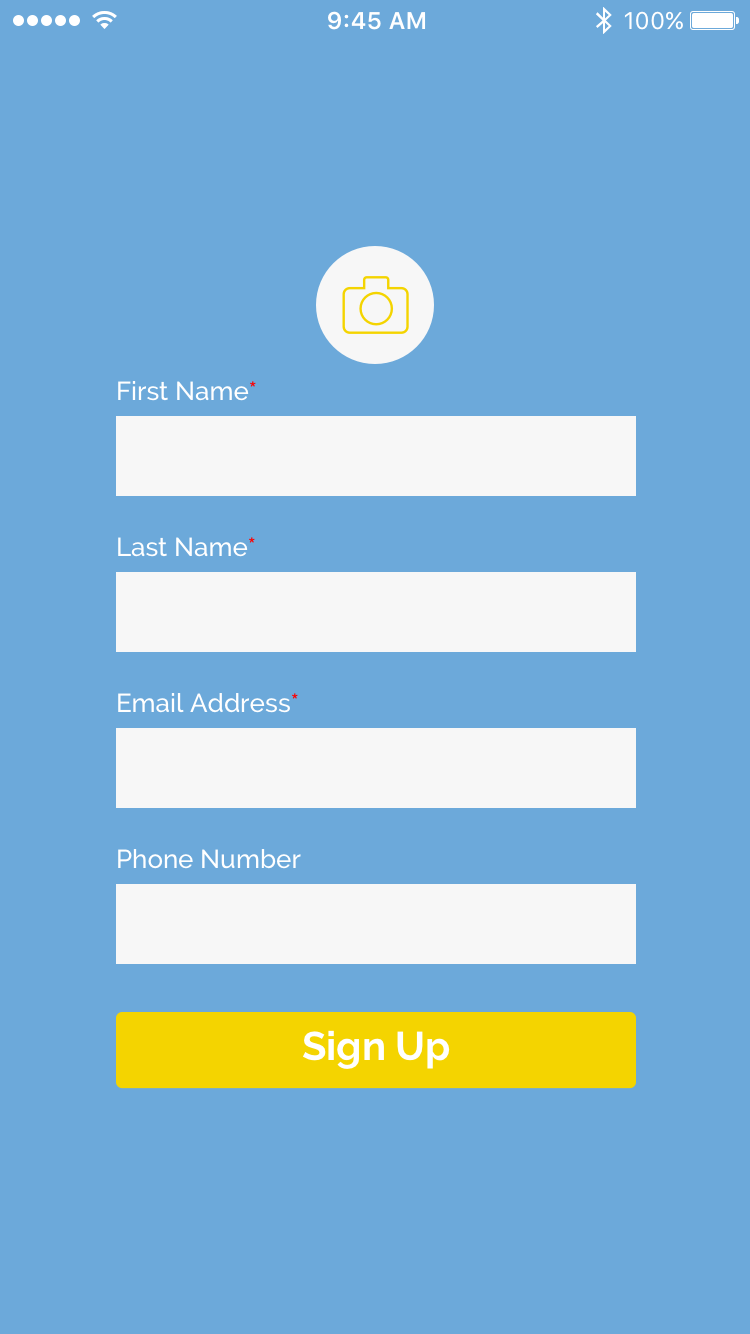
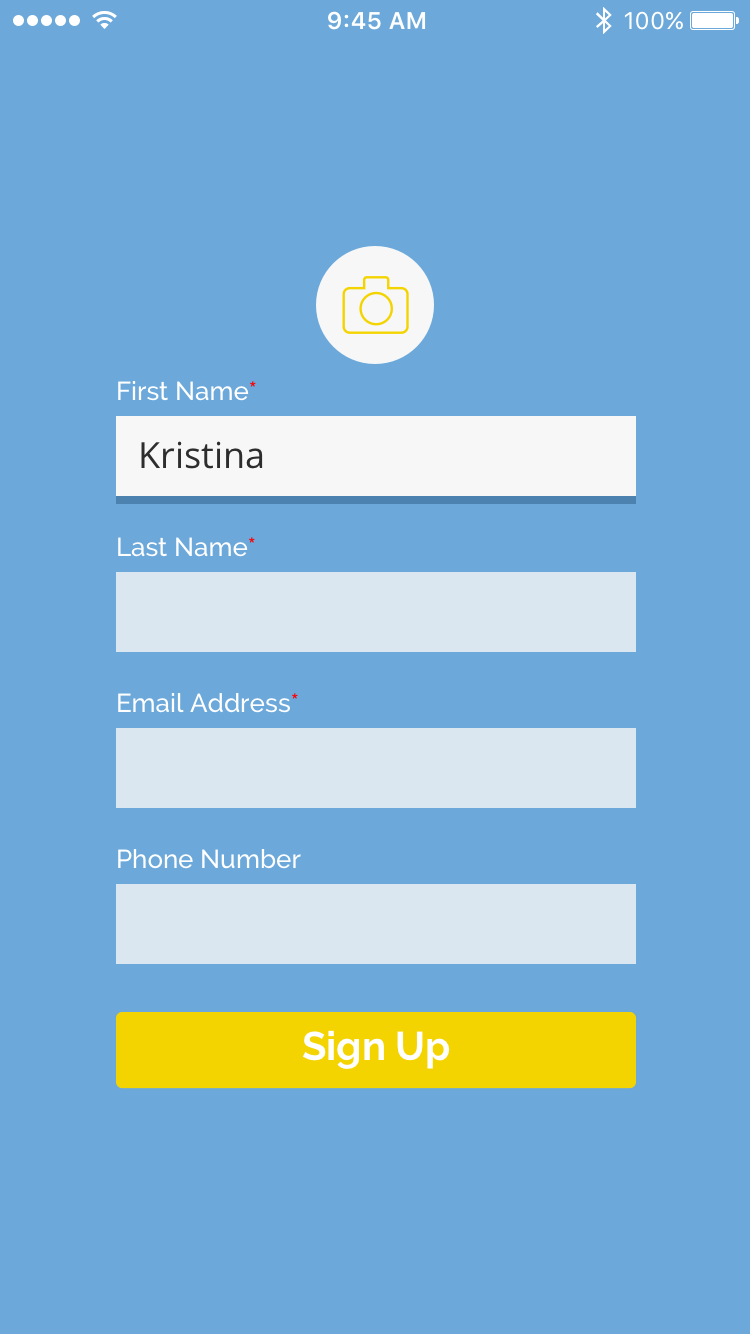
The Resident
The primary uses for Flint residents are to: locate free water centers equipped with additional resources, connect with donors, build community, and keep up to date with news regarding the water crisis.
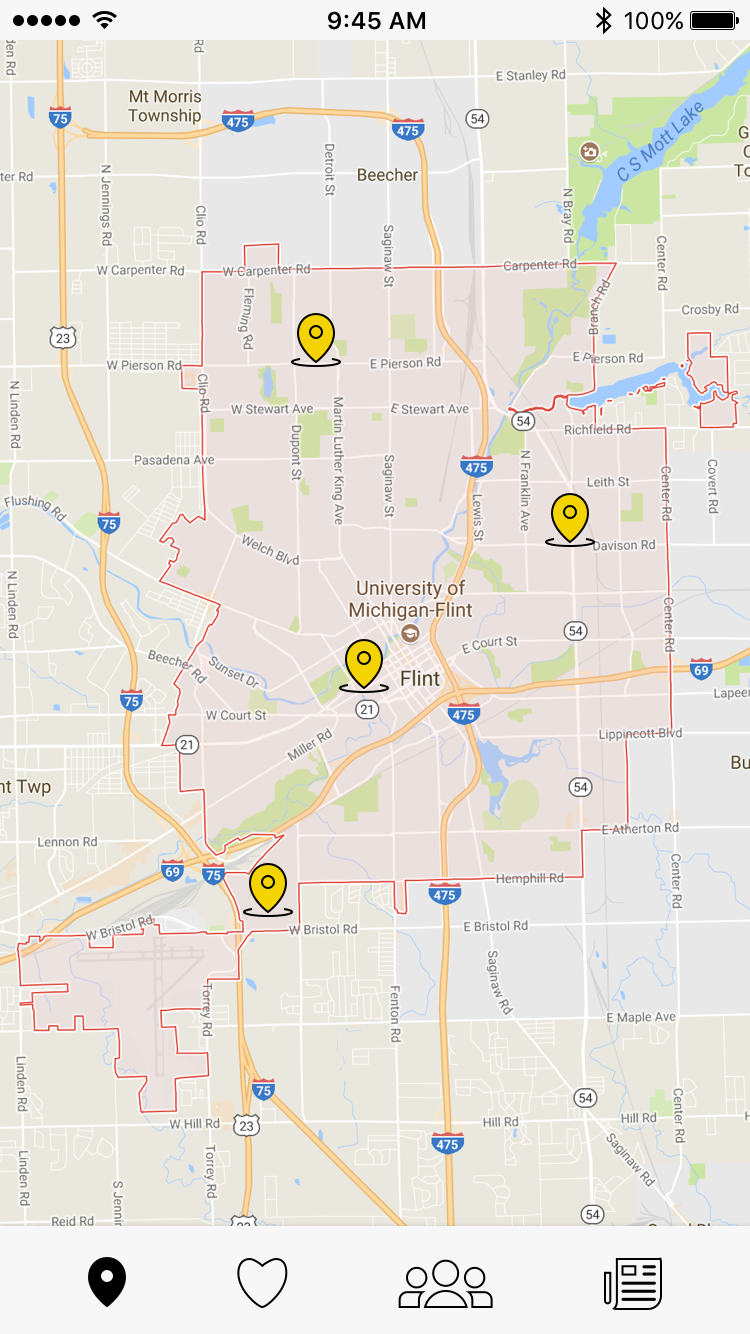
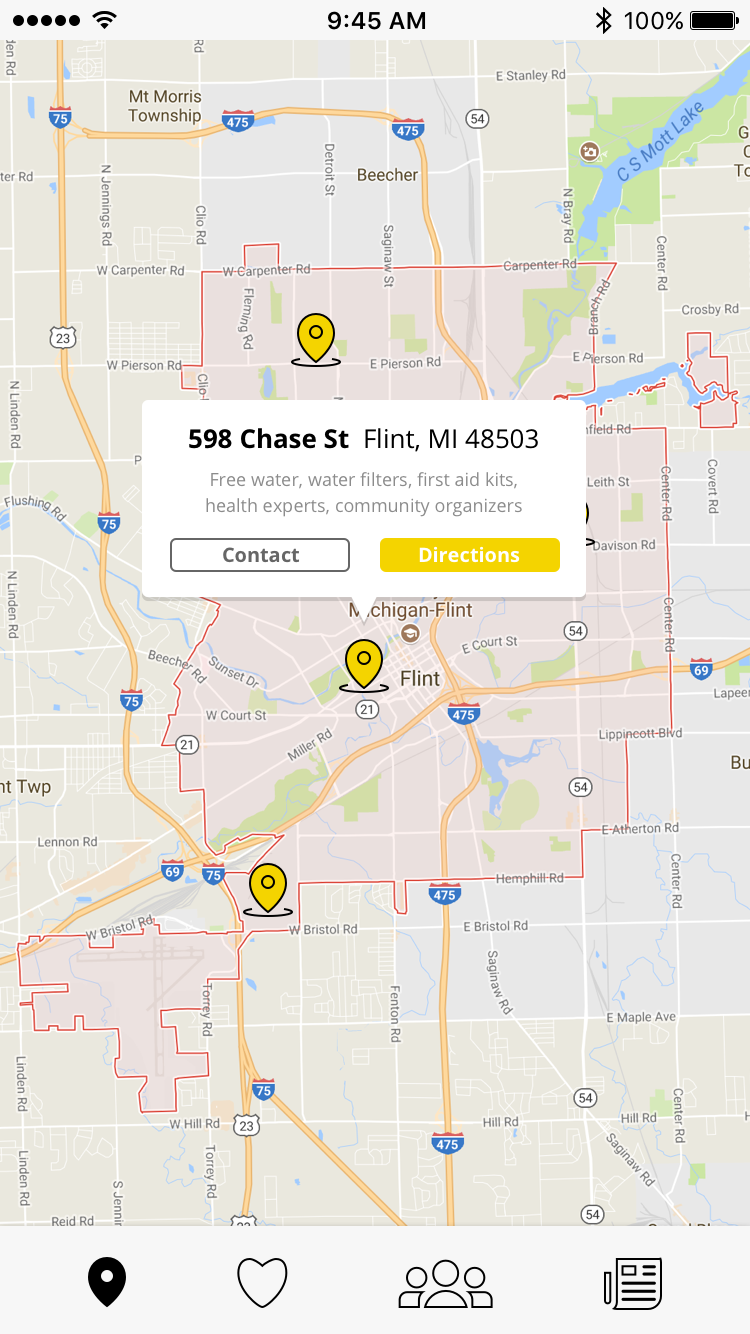

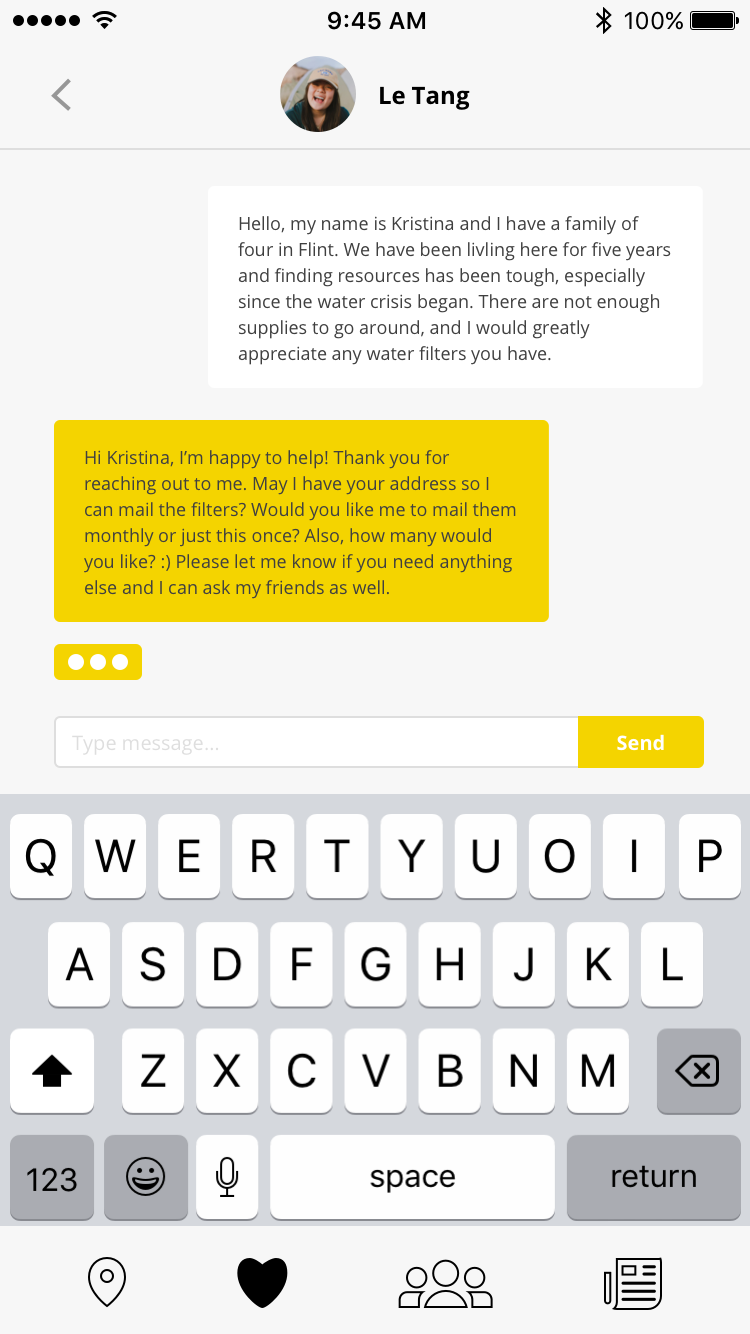


The Donor
The primary uses for donors are to: learn about the Flint water crisis in detail; make donations in the form of money, supplies, time, etc.; connect with families; and keep up with news regarding the water crisis (similar to the “News” interface for Flint residents using the mobile application.
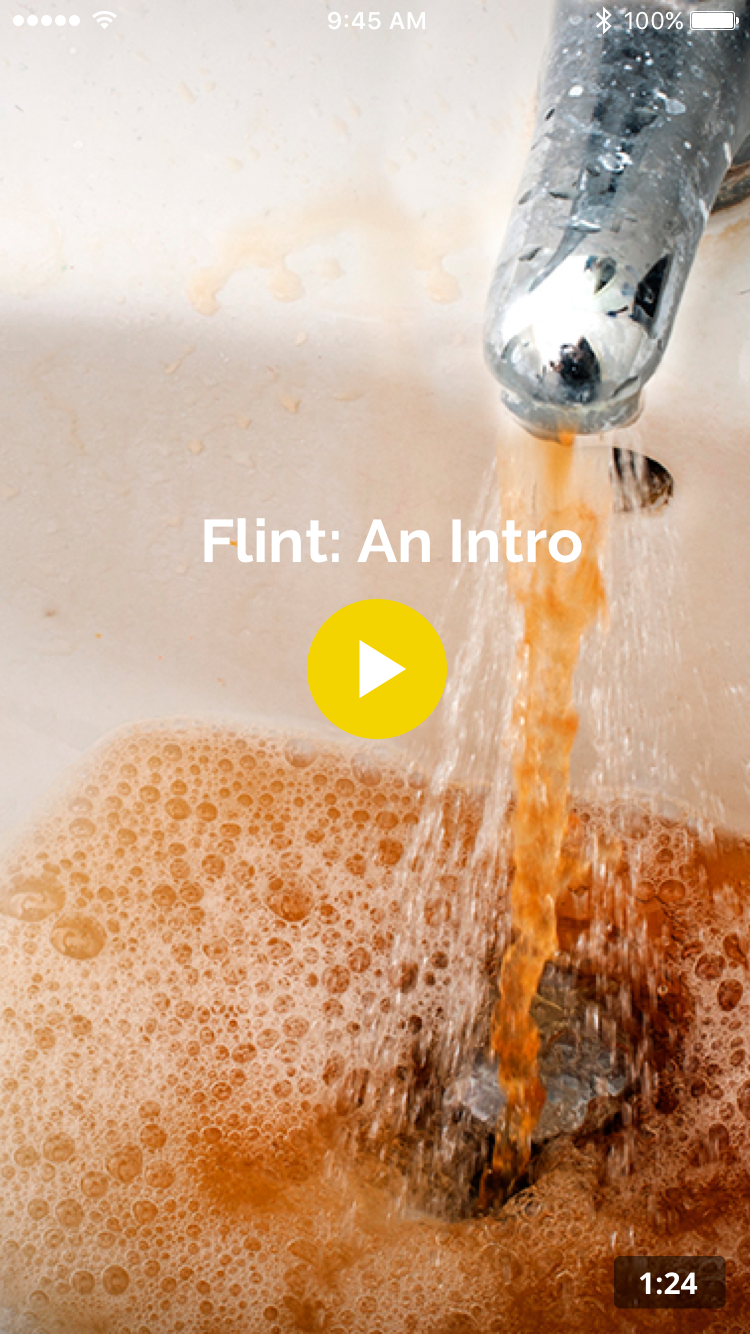



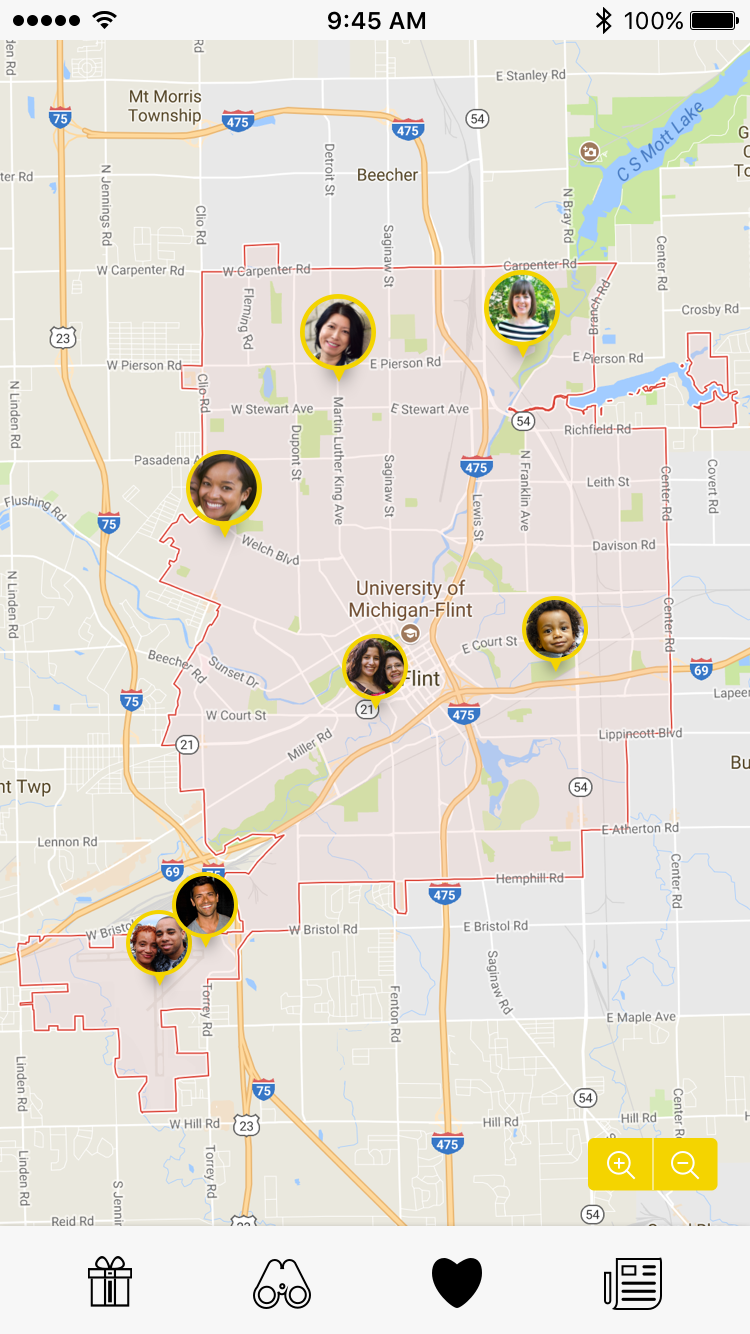
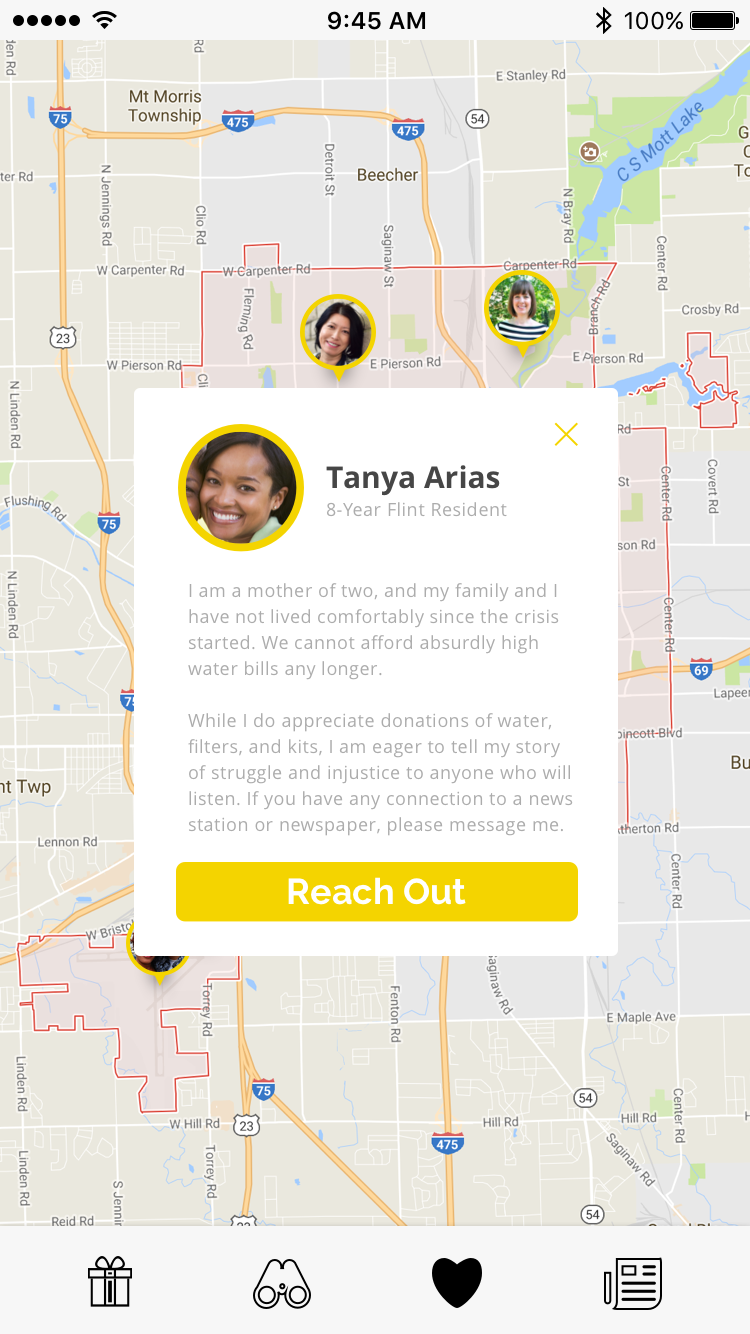
Takeaways
While I better learned how to design for people who are in need of assistance rather than people seeking entertainment, there was one primary limitation that prevented me from gathering responses from actual Flint residents: being a student currently studying abroad in Copenhagen, I was unable to conduct any field work due to financial restraints and academic responsibilities. This led to research and a bit of guesswork being the foundation of my design decisions.
Something I also struggled with internally was the frustration of brainstorming ways to convince people to care. I felt that, like all crises projected onto the news, Flint came and went. Many stopped caring after the first week of news coverage, and so that was the dominate question hovering throughout this entire process: “If people dropped it so quickly, how do I re-introduce it?” This is why I chose to target past and current charity: water donors, because this demographic cares enough about water accessibility to do something about it.
I would like for this to be made into an actual mobile application, as the water crisis in Flint is ongoing. I think it is the perfect opportunity for charity: water to provide assistance within their home country, and Flint, MI is close to New York City, NY, especially when you consider the distances that the organization has traveled in the past.
Credit
With the exception of the portraits in the “Connect” screen, all photos used throughout my case study are from charitywater.org and Google, including the portraits for the user profiles. Additionally, the photo of the sink in the project thumbnail is from Global Policy.